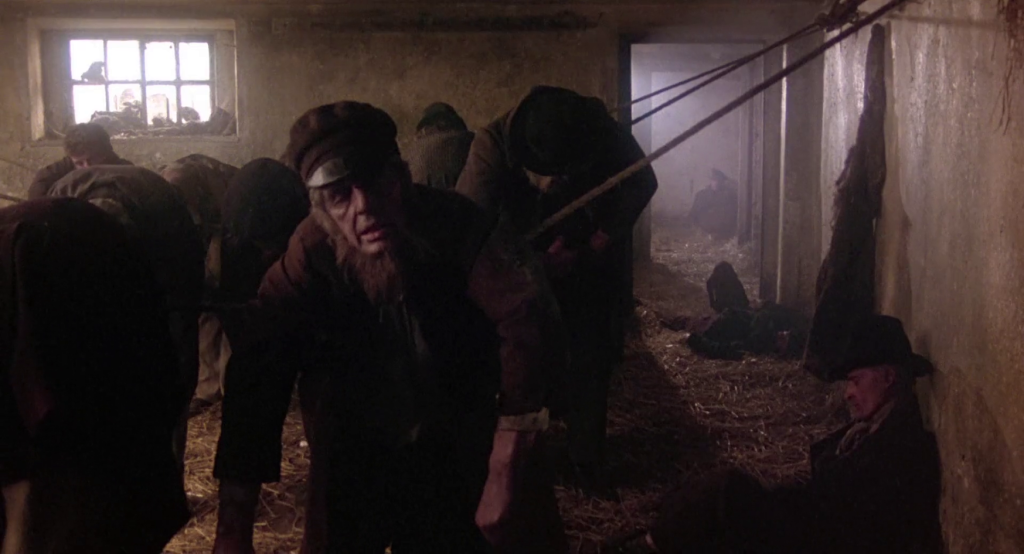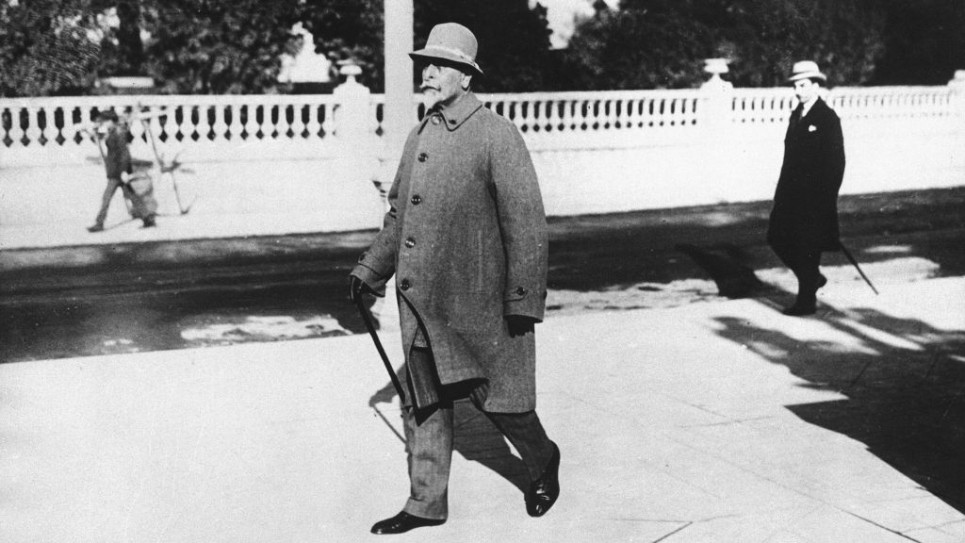
The image above shows a recreation of what is supposed to be a “twopenny hangover“. It’s a term increasingly commonly found on Google, and it purports to describe a type of cheap Victorian-era doss-house in which indigents could secure shelter and rest for the night more cost-effectively than by paying for a bed, which typically cost fourpence or fivepence. The idea was that, in exchange for the payment, the poor would be allowed to sleep, several men at a time, draped over a rope that had been suspended across a room at chest level.
Acceptance that such places actually existed has become widespread over the past few years, and a look at a Google Image search for the term “twopenny hangover” shows at least four different pictures that supposedly depict examples. This one, which is by a distance the most detailed and explicit, is actually a still from a 1978 Sean Connery/Michael Crichton caper, The Great Train Robbery, which is set in the London of the middle 1850s; the others have been pulled into the gallery below. Two of these, which seem pretty similar at first glance, can be seen to depict a rather different sort of lodging house when they’re examined closely.



So let’s look into this a bit more more deeply.
So far as I can tell, the term “twopenny hangover” (sometimes corrupted, in online sources, to become the “penny hang“) originates with George Orwell, who – in his highly influential Down and Out in Paris and London (1933), a book which was based on his own experience of living on the margins of poverty during the Great Depression – wrote that
Continue reading









